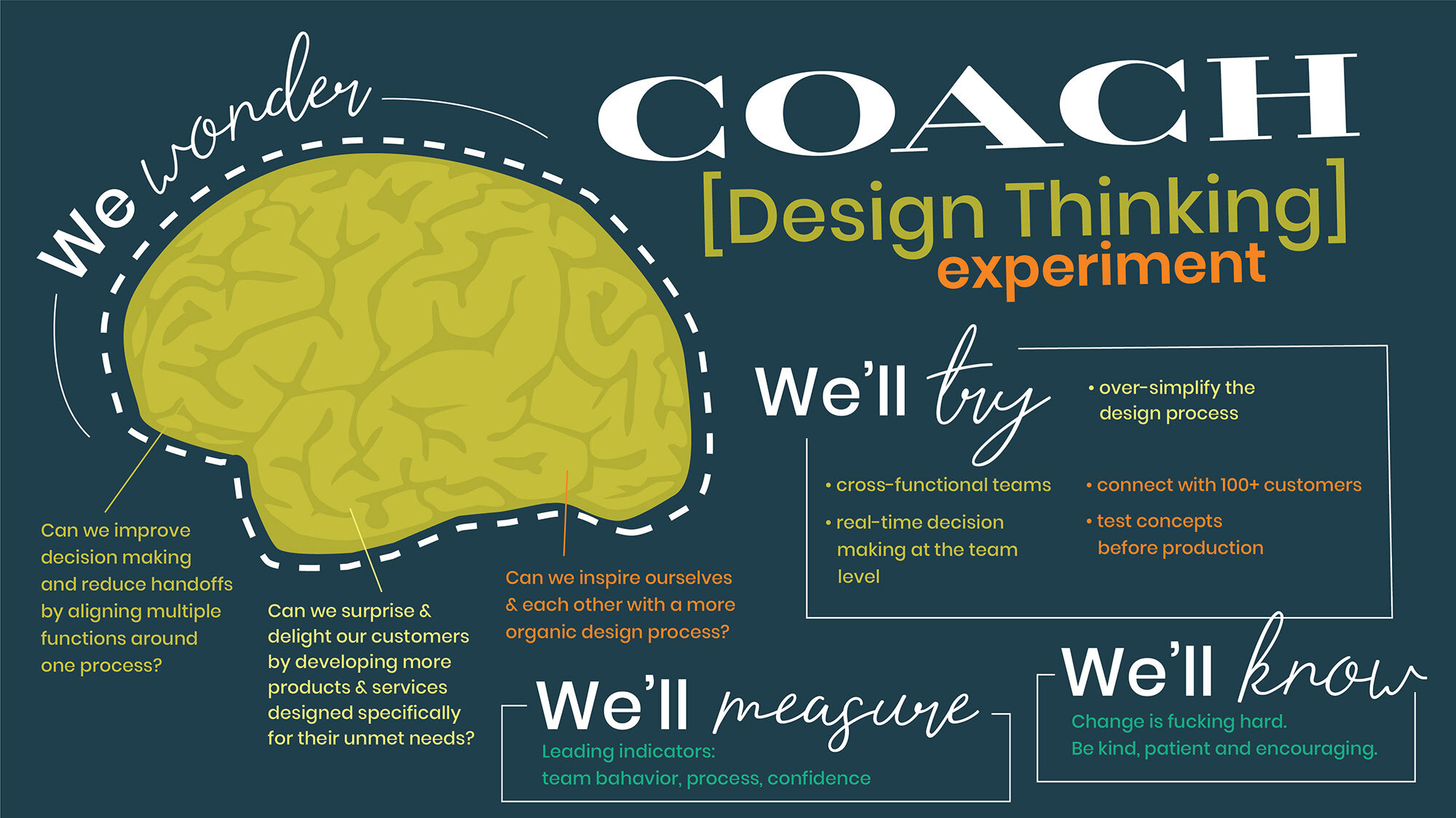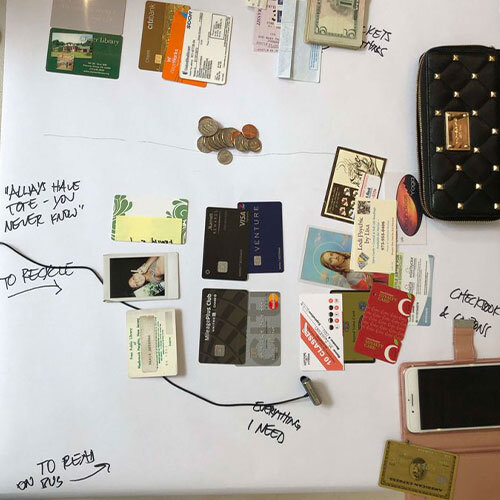TAPESTRY
A design thinking experiment.
This is the story of Coach’s first Design Thinking Experiment, one of the first steps towards a more collaborative, innovative, and inclusive Coach. We invite you to explore, be curious, and use the tools we’ve created for you.
Wondering how to navigate? This first page is here to provide context and spark your curiosity. The following pages will go deeper into what the teams learned and how you might use the insights they uncovered for future work. In fact, each “click” is meant to expose another level of depth. On the final pages, we’ve included downloadable prompts to keep these learnings alive!
So, what was the Design Thinking experiment?
In 2019, the Coach leadership team invested in a project to see how Design Thinking could impact product development and culture at Coach. We started with a few key questions and designed a structured experiment to test our assumptions.
This is a summary of what we set out to explore when we kicked things off April 2019
Starting in April, twelve colleagues from multiple disciplines including design, merchandising, PD, marketing, strategy, and HR worked to break down traditional barriers and test out new tools and behaviors.
PAUSE, I still don’t know what Design Thinking is. We’ve got your back! Check this or this out for a quick update
What were the projects?
The executive team selected two challenges for the teams to tackle:
The future of SLGs in an increasingly digital world
2. How to surprise and delight female outlet shoppers
What did the teams do?
Over two months, the teams connected with over 100 users in a variety of contexts including the retail environment, outlet mall, and even in our users’ homes. In just three days, the team built and tested 28 low resolution prototypes (this means they used really cheap and easy-to-use materials like construction paper, string, and thrift store buttons).
The teams dedicated over 100 hours of time together trying out new human-centered tools and behaviors to bring back to Coach.
Let’s Dig In!
What about Culture?
In addition to the project results, the team identified 7 transformational tools, behaviors, and moments that have the potential to shift culture at Coach. They were shared with the executive team and together with the 12 participants, they brainstormed ways Coach could try some of the new behaviors and tools at scale.
This is just the beginning!
Here is a sample clip from one of the 7 groups sharing their idea for how to better embrace experimentation at Coach.








